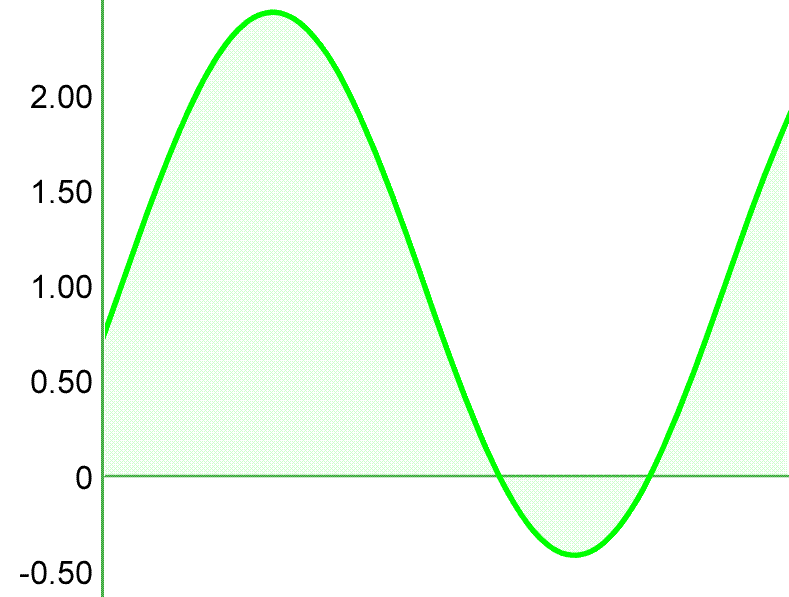You are using an out of date browser. It may not display this or other websites correctly.
You should upgrade or use an alternative browser.
You should upgrade or use an alternative browser.
Just for Fun:
- Thread starter rattus
- Start date
- Status
- Not open for further replies.
LarryFine
Master Electrician Electric Contractor Richmond VA
- Location
- Henrico County, VA
- Occupation
- Electrical Contractor
How many samples is "a series"? Enough to draw a fairly accurate complete single cycle?
Hameedulla-Ekhlas
Senior Member
- Location
- AFG
If one had a series of v(t)i(t) product values, as many as needed, but no additional information, how would one go about separating the real and reactive powers from the instantaneous apparent power?
apparent power is magnitude of complex power and how it could be instantaneous.
Are we to assume sinusoidal AC? ...and linear load?If one had a series of v(t)i(t) product values, as many as needed, but no additional information, how would one go about separating the real and reactive powers from the instantaneous apparent power?
Last edited:
apparent power is magnitude of complex power and how it could be instantaneous.
"Apparent instaneous power" is acceptable terminology and is self explanatory.
Are we to assume sinusoidal AC? ...and linear load?
Of course.
How many samples is "a series"? Enough to draw a fairly accurate complete single cycle?
As many as you need, say a googol.
He did say, "...as many as needed..."How many samples is "a series"? Enough to draw a fairly accurate complete single cycle?
Hameedulla-Ekhlas
Senior Member
- Location
- AFG
"Apparent instaneous power" is acceptable terminology and is self explanatory.
Ok thanks for this than what is difference between the instantaneous complex power and instananeous apparent power.
Got Excel? Why not generate some numbers for us... but please not a googol. What would make it interesting is the product values not indicating the exact peaks or zero crossings.As many as you need, say a googol.
Additionally, given only the procut values, there will likely be at least two answers. For example, |v||i| = |v'||i'|, where |v'| = |i| and |i'| = |v|.
Nothing in my bookOk thanks for this than what is difference between the instantaneous complex power and instananeous apparent power.
"procut" is a typo for "product"....
Additionally, given only the procut values, there will likely be at least two answers. For example, |v||i| = |v'||i'|, where |v'| = |i| and |i'| = |v|.
Thinking a bit more on this, you didn't ask for the values of v and i.
Hameedulla-Ekhlas
Senior Member
- Location
- AFG
Nothing in my book
I have read apparent power as a magnitude and I have never heard of instantaneous apparent power. We can say instantaneous complex power. Am I right ?
Ok thanks for this than what is difference between the instantaneous complex power and instananeous apparent power.
Instantaneous power cannot be complex because the addition is algebraic not phasorial. There is no power triangle as in the steady state.
It's still "complex" in the literal sense, being made up of two parts. It could be complex numerically if one chooses to describe the waveform as a sine function of time... nothing different than what we do with voltage and current.Instantaneous power cannot be complex because the addition is algebraic not phasorial. There is no power triangle as in the steady state.
Anyway, futher thought on the matter leads me back to saying there are two answers because we cannot discern leading or lagging current by vi product information alone.
LarryFine
Master Electrician Electric Contractor Richmond VA
- Location
- Henrico County, VA
- Occupation
- Electrical Contractor
Okay, show me the pic of a complete cycle.As many as you need, say a googol.
Perhaps this one...? (Nice and big so you can copy and draw onOkay, show me the pic of a complete cycle.

I'll bite, or at least take a guess.
Power traveling to the load will have a positive sign (positive voltage and positive current, or negative voltage and negative current.)
Power traveling back to the source will have a negative sign (current and voltage are opposite signs).
So the real power would be the difference between the two.
From Smart's graph, the real power would be the difference between the area above the axis and the area below the axis.
Do I win a cigar??
Steve
Power traveling to the load will have a positive sign (positive voltage and positive current, or negative voltage and negative current.)
Power traveling back to the source will have a negative sign (current and voltage are opposite signs).
So the real power would be the difference between the two.
From Smart's graph, the real power would be the difference between the area above the axis and the area below the axis.
Do I win a cigar??
Steve
Last edited:
It's still "complex" in the literal sense, being made up of two parts. It could be complex numerically if one chooses to describe the waveform as a sine function of time... nothing different than what we do with voltage and current.
Anyway, futher thought on the matter leads me back to saying there are two answers because we cannot discern leading or lagging current by vi product information alone.
To avoid confusion, don't call it "complex". There are no complex numbers in p(t).
And, we are describing the vi product as sinusoids and an offset, but still no imaginary values. We would have to use rotating phasors to do that and we don't want to get into that quagmire just now.
LarryFine
Master Electrician Electric Contractor Richmond VA
- Location
- Henrico County, VA
- Occupation
- Electrical Contractor
I only see one waveform. Didn't your original question express two values?Perhaps this one...? (Nice and big so you can copy and draw on)

And, what's with the DC offset?
- Status
- Not open for further replies.
